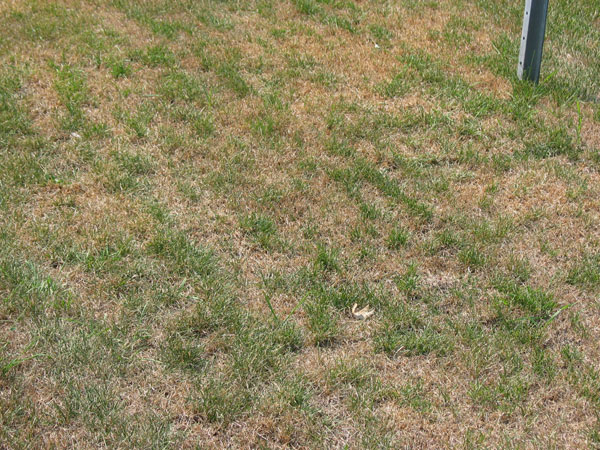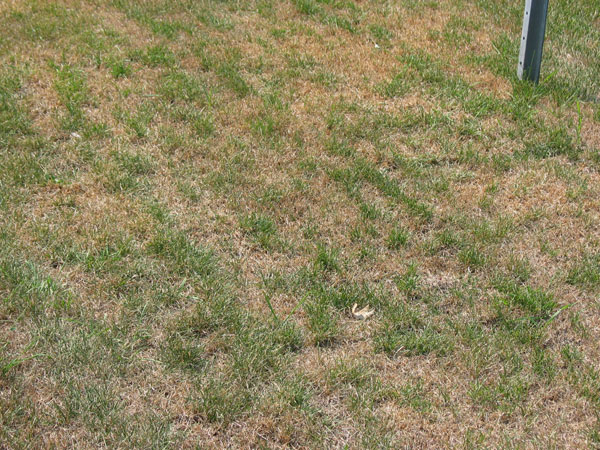
Is your lawn dry and brown this spring and early summer? Don't despair. You're not the only homeowner who is struggling with a mysteriously brown lawn. Your lawn could be brown for a number of reasons, but most of them can be solved with the right lawn care. Whether it's drought or dormancy, disease or insects, Nutri-Lawn Burlington has the answer for you. Read on to find out how to catch your lawn's killer with Nutri-Lawn Burlington lawn care services.
Murder suspect: Drought
If your lawn goes brown in a drought, this doesn't necessarily mean it's dead. Lawns may go brown from lack of hydration in order to survive. This is called dormancy, and it's almost like hibernation for your grass. Dormant lawns can remain in that state for as long as six weeks without risk of harm. If you go any longer than those six weeks, you run the risk of causing permanent damage to your grass.
A couple of things are important to remember about lawn care and your dormant lawn. Don't go back and forth with dormancy. If you choose to bring it out of dormancy – which you can do by providing it an inch of water per week – don't decide a week or two later that you'd like to conserve water by allowing it to re-enter a dormant phase. You'll put too much stress on your lawn by flip-flopping.
Next, make sure you're keeping off of your dormant lawn. Traffic of any kind, foot or otherwise, will damage your hibernating grass.
Murder suspect: Disease
Unlike dormancy, disease truly can kill your lawn. Diseases and fungi swoop in to eat up the nutrients from your lawn, effectively killing it.
Diseases can be prevented with Nutri-Lawn Burlington lawn care services. By growing a strong, healthy lawn, your grass will be better protected from the onslaught of disease. Fertilize and aerate your lawn annually.
Thatch is the slowly decomposing material that has built up on the surface of your lawn. When there’s too much, it’s a perfect breeding place for both disease and insects, and also tends to suffocate your grass roots. Aerating your yard is a crucial step in disease prevention Burlington lawn care.
Another critical prevention method is ensuring your irrigation is running properly. If you water your lawn at night, the excess water will be able to sit on your grass in the cool temperatures. This creates a perfect area for disease and fungi to thrive. Water your grass in the early morning, when temperatures are cool enough to allow your lawn to absorb the water, and late enough so that excess water does not invite mould and disease.
Murder suspect: Insects
Insects munch away at your lawn and grass roots, weakening your grass. What solution you find for this lawn killer will depend on the type of insect attacking your lawn. While beneficial nematodes will work for grubs, you may have to try other insect management techniques for other species, especially above the surface.
It isn't always a simple black and white answer when it comes to detecting which suspect did the job on your lawn. Call in the pros at Nutri-Lawn Burlington to catch the culprit and bring back the health and vitality of your lawn. For your complimentary quote on Nutri-Lawn Burlington lawn care services, contact Nutri-Lawn Burlington today!






